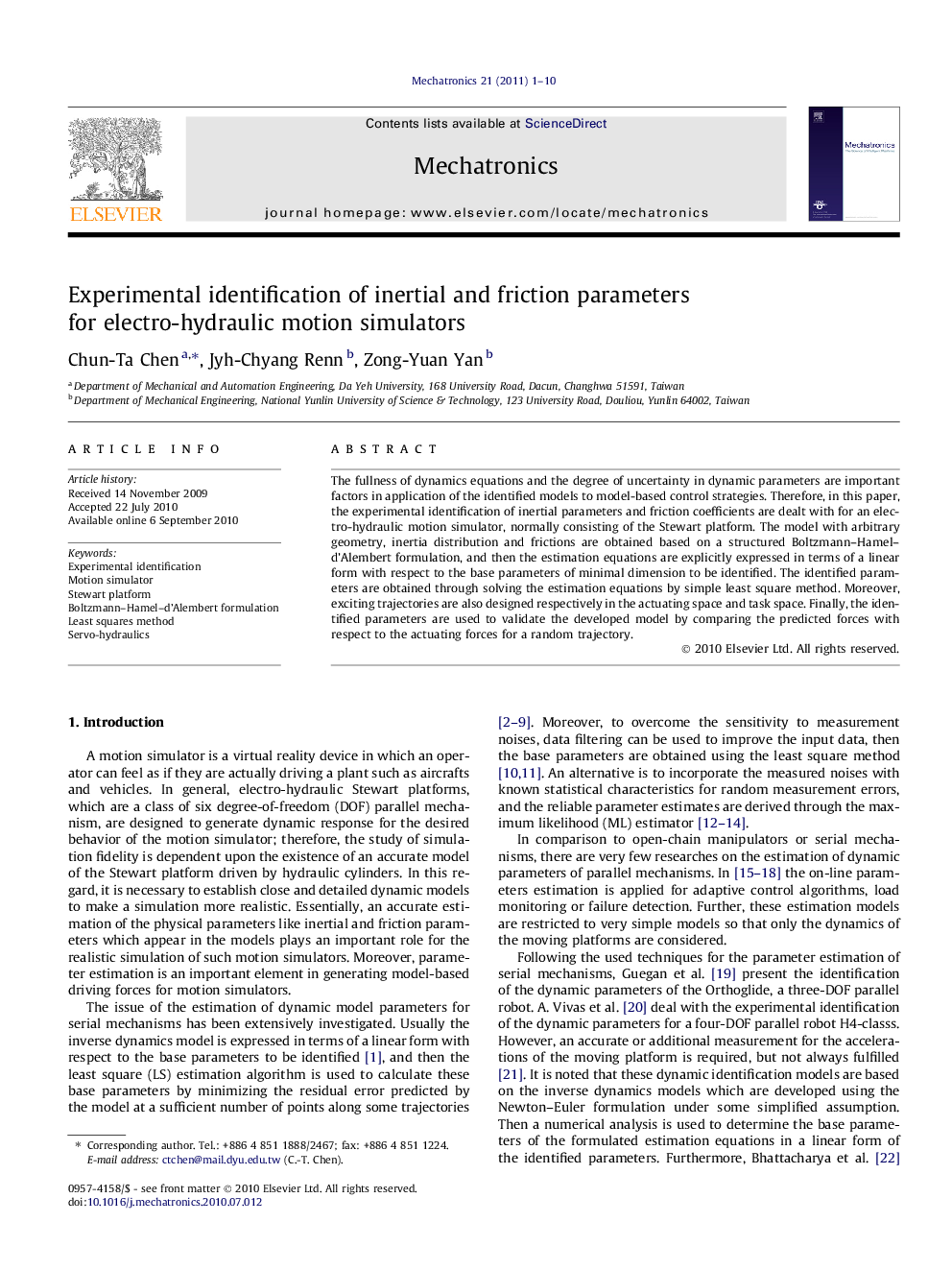| کد مقاله | کد نشریه | سال انتشار | مقاله انگلیسی | نسخه تمام متن |
|---|---|---|---|---|
| 736680 | 893886 | 2011 | 10 صفحه PDF | دانلود رایگان |

The fullness of dynamics equations and the degree of uncertainty in dynamic parameters are important factors in application of the identified models to model-based control strategies. Therefore, in this paper, the experimental identification of inertial parameters and friction coefficients are dealt with for an electro-hydraulic motion simulator, normally consisting of the Stewart platform. The model with arbitrary geometry, inertia distribution and frictions are obtained based on a structured Boltzmann–Hamel–d’Alembert formulation, and then the estimation equations are explicitly expressed in terms of a linear form with respect to the base parameters of minimal dimension to be identified. The identified parameters are obtained through solving the estimation equations by simple least square method. Moreover, exciting trajectories are also designed respectively in the actuating space and task space. Finally, the identified parameters are used to validate the developed model by comparing the predicted forces with respect to the actuating forces for a random trajectory.
Research highlights
► The dynamic model for an electro-hydraulic motion simulator, normally consisting of the Stewart platform, with arbitrary geometry, inertia distribution and frictions are obtained based on a structured Boltzmann-Hamel-d’Alembert formulation, and then the estimation equations are explicitly expressed in terms of a linear form with respect to the base parameters of minimal dimension to be identified.
► Exciting trajectories are designed respectively in the actuating space and task space. Experimental results and investigations validate the identified dynamics model through the least square method. Discussions are made for the exciting trajectories in the actuating space and task space.
► The proposed formalism and experimental identification can be applied to any parallel manipulator or closed-link mechanism without resort to using computer algebra programs.
Journal: Mechatronics - Volume 21, Issue 1, February 2011, Pages 1–10